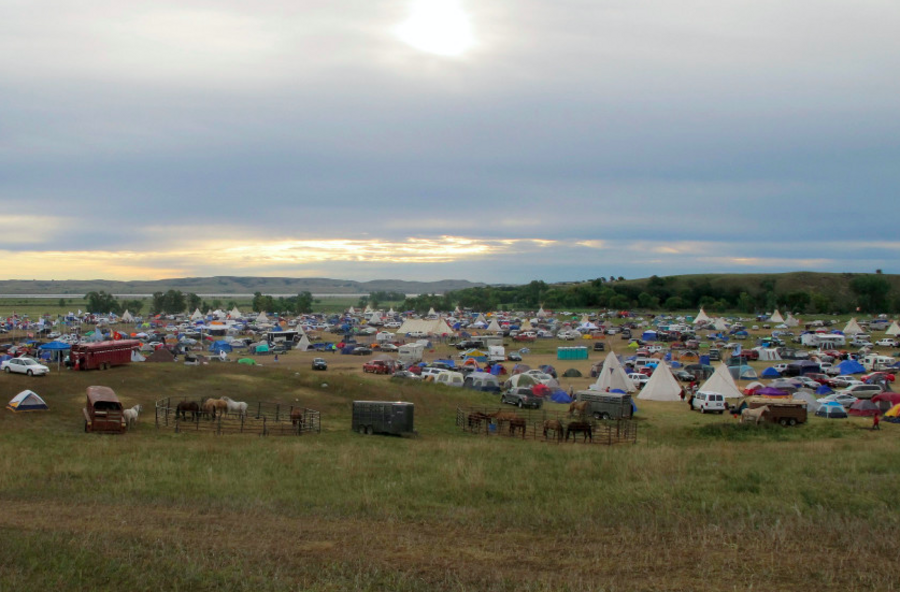Why the Dakota pipeline protest still has traction
Loading...
As the weather gets cold, the nearly 7,000 people camping out in solidarity with the Standing Rock Sioux Tribe’s protest of the Dakota Access Pipeline are settling in for the winter.
Although the protest has gone on for a month and a half now, the movement has only gained momentum with new campers arriving every day and “weekend warriors” joining in whenever they can. In addition to drawing attention to the disproportionate consequences native people face from the proliferation of the energy industry, the protests have also served as a platform to address other systemic issues confronting tribes, including poverty, racism, substance abuse, and inferior school systems.
"For 48 years, I've lived under this system, and I'm not the only one," Unpa Nunpa, a Standing Rock Lakota, told NBC. "This is a chance for us to express our feelings about living underneath this system."
Unpa Nunpa calls this generation of native people “the fearless generation.”
"They've got schools that have abused them, cops that have abused them, juvenile-justice systems that have abused them,” he said. “They've endured domestic violence in their homes directed at them, they've endured substance abuse in their homes – particularly alcoholism – they've been bullied by their peers."
According to a study of US Census data by the Pew Research Center, approximately 1 in 4 native Americans live below the poverty line. On the Standing Rock Sioux Tribe reservation, that number is even higher. Similarly, native Americans have a higher unemployment rate than the national average. Faced with substandard school systems, only 53 percent of native Americans graduate high school (compared with 83 percent national average) and only 17 percent have a bachelor's degree or higher.
The Standing Rock protest acted as a catalyst, a call to action for many young native people who, frustrated with their circumstances, saw an opportunity to fight back against the myriad injustices they and their families have faced for generations.
"Three years ago, not very many young indigenous people in the plains were speaking out about natural energy extraction in our homelands because we didn't have access to the information to learn about what was happening in our backyards," Frank Waln, an Sicangu Lakota hip-hop artist and activist, told Fader. “Now, we have powerful movements being started by youth from our communities. Our people are waking up, resisting colonialism, and organizing like I've never seen in my lifetime.”
Bringing so many geographically disparate tribes together may also build a coalition to take on future conflicts.
“As we embark on our own battles over trans-boundary mining issues, we need to support our brothers and sisters across Indian country so that we might be able to call on them to do the same for us in the spirit of the Idle No More movement,” Council President Richard Peterson said in a statement.
The protest has also served to heighten awareness of the plight of indigenous communities and disadvantaged groups all over the world. Members of Canadian First Nations have traveled to join the protests. A Palestinian flag flies over the South Dakota campground in solidarity with that community.
The protest has drawn tribes "who have had historical differences for a thousand years," Benalex Dupris, a professional comedian and Lakota native, told NBC. "We're all in the same camp together and we're playing chess and we're making jokes and we're paddling on canoes from Alaska in the Missouri River. This is the most significant gathering of native people in modern history."
[Editor's note: The original story incorrectly stated Native American high school graduation rates].






